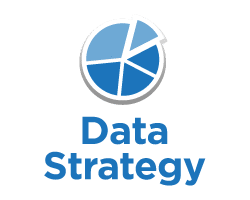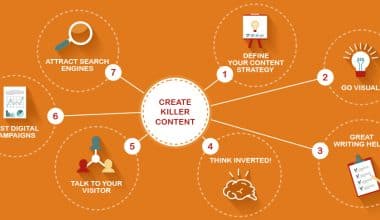Offering products at the lowest possible price is a common approach used by firms to drive growth. When a corporation can sell its products at a reduced price, it becomes more competitive. To accomplish this, a company must design a cost leadership strategy. In this article, we will discuss what cost leadership is and, with an example, how to develop an effective focus strategy. We will also distinguish between cost leadership vs. differentiation strategy.
What is a Cost Leadership Strategy?
Cost leadership happens when a company is the low-priced category leader. To achieve this without substantially reducing income, a company must lower costs in every other parts of the business, including marketing, distribution, and packaging. A cost leadership strategy is a business’s aim to become the lowest-cost provider in its industry or market.
Focus Cost Leadership Strategy
A focus cost leadership plan is a business strategy in which a corporation seeks to gain a low-cost advantage in a specified market niche or sector. The strategy is built on providing a lower-cost product or service than competitors while retaining an acceptable degree of quality.
To put this approach into action, a company must carefully choose a restricted market area or niche in which it can succeed and match client needs better than competitors. The organization should then concentrate its resources and efforts on properly serving that segment, with a focus on cost reduction and efficiency.
This strategy necessitates a thorough grasp of the target market’s individual demands and preferences, as well as a focus on cost reduction in all aspects of the business, from supply chain management to manufacturing processes.
Walmart in the retail business, Southwest Airlines in the airline industry, and Aldi in the food market are examples of corporations that have successfully executed a focus cost leadership strategy.
Benefits of a Focus Cost Leader
Being a cost leader has numerous advantages. Cost leaders can charge the lowest price for a product while still making a profit. To compete with the prices of a cost leader, other companies may have to sell their products at a loss.
Cost leaders can also endure recessions better than competitors because they have experience appealing to budget-conscious consumers. A company with extremely low operational expenses may be able to continue longer without meeting sales targets than a company with high costs.
Cost leaders might also be more flexible. Because their costs are minimal, they may give discounts more frequently or even try out new product offerings that other companies may not be able to. Companies that are adaptable are more likely to attract a bigger consumer base.
While there are numerous advantages to being a cost leader, it should be highlighted that implementing a cost leadership plan might be dangerous. Rather than good products or brand appeal, a cost-leadership company’s biggest value to consumers is low pricing. As a result, if a competitor can lower prices even further, it will constitute a significant danger to a company’s consumer base.
Example of a Cost Leadership Strategy
Here are some examples of organizations that have used the cost leadership strategy:
#1. Walmart:
Walmart’s “Everyday Low Prices” policy has helped the corporation become the world’s largest retailer. Walmart gains cost leadership by managing its supply chain efficiently and obtaining lower supplier costs.
#2. Ryanair:
Ryanair is a low-cost airline that offers low-cost, no-frills flights. The airline achieves cost leadership by reducing operational expenses through practices such as using secondary airports, charging for extras such as luggage and seat selection, and operating a fleet of fuel-efficient planes.
#3. Search IKEA:
Search IKEA is a furniture shop that sells fashionable and functional furniture at reasonable rates. Cost leadership is achieved by efficient supply chain management, flat-packaging, and self-assembly alternatives, which reduce transportation and labor expenses.
#4. McDonald’s:
McDonald’s is a fast-food restaurant franchise that provides consumers with low-cost meals. Cost leadership is achieved through standardizing procedures, using cost-effective ingredients, and maintaining a large-scale supply chain that benefits from economies of scale.
#5. Amazon:
Amazon is an online store that sells a wide variety of products at reasonable costs. Through excellent logistics and supply chain management, the company gains cost leadership, allowing it to offer clients lower pricing while retaining fast delivery times.
How to Develop a Focus Cost Leadership Strategy
It takes time, study, and perseverance to develop a successful focus cost leadership strategy. Officials at a company will almost certainly need to revise their cost leadership plan on a regular basis to account for price increases in labor and raw materials, market changes, and new rivals. Here’s a step-by-step roadmap to developing a focus cost leadership strategy:
#1. Examine current operations
First, evaluate the organization’s current activities. It is critical to understand the exact expenses of every material purchased by the organization, as well as the labor, administration, and software used in the creation of goods and services. Costs that may have been overlooked, such as invoicing software, grammar-check subscriptions, and word-processing software, should be included. If the company must incur expenses in order to generate its products, those expenses should be accounted for in the sales price.
#2. Research competitors
Next, conduct extensive research on your competition. Companies should learn as much as they can about the procedures and costs of other businesses in order to identify competitors. Even if a company does not become a cost leader, analyzing a competitor’s operations can help it improve its own costs or processes.
#3. Determine cost-cutting strategies.
Finally, identify cost-cutting solutions and create practical plans for incorporating these techniques into the business’s operations. This could entail following up with vendors, placing larger supply purchases, and using new technology.
#4. Keep track of your progress.
Companies must discover measures to track and monitor progress when they implement cost-cutting tactics. Cost leadership is a process that many businesses repeat on a regular basis.
Best-Cost Strategy
The best-cost strategy is a method that firms can employ to give high-quality producte at low prices to their customers. When used appropriately, this method can help businesses stand out from the crowd. Knowing when to use a best-cost strategy will help you keep your clients happy.
What are Competitive Strategies?
Competitive strategies are long-term action plans that assist businesses in competing with competitors who offer similar products. They examine competitors’ strengths, weaknesses, and opportunities to ensure their own firm can win more clients. The following are the five most important competing strategies:
- Low-cost leader: To attract clients, low-cost leader companies focus on offering the lowest price in their field.
- Broad differentiation: This strategy focuses on developing distinctiveness in the marketplace to distinguish a company from competitors.
- Best-cost: The best-cost strategy seeks to provide distinctive, high-quality products or services at the lowest feasible cost.
- Focus low-cost: The low-cost focus promotes goods or services for a certain niche group at a lower cost than competitors.
- Focus differentiation: This strategy focuses on a specific set of individuals and delivers things that are tailored to them.
What is a Best-Cost Strategy?
A best-cost strategy, also known as an integrated low-cost differentiation strategy, is a means of creating high-quality goods at low costs. It emphasizes on providing customers with products that meet their expectations while remaining within their budget. This is one of the five primary competitive tactics used by firms to differentiate themselves from their competition.
The best-cost strategy blends differentiation with low-cost provider techniques. They focus on providing appealing performance, features, and other associated attributes at a lower price than their competitors to attract buyers. This strategy also encourages lower production costs, allowing them to lower the price of goods or services.
When to Implement a Best-Cost Strategy
The best-cost leadership strategy works best when you have the resources and capabilities to manufacture a high-quality product at a low cost. Businesses with little fixed expenses and overhead do best with this technique because they can afford to cut their product prices. For example, an online merchant may fare better with the best-cost strategy than a physical store that must pay rent and other related taxes.
Challenges of Best-Cost Strategy
When considering the best-cost strategy, keep the following points in mind:
#1. Difficulty executing
Because it takes time to produce better products, the best-cost method is difficult to apply. If a corporation lacks the ability to deliver a competitive edge and price advantage, it may struggle to compete with competitors who use differentiation or low-cost techniques. Finding the correct balance of quality and affordability is crucial to successfully implementing the best-cost strategy.
#2. High upfront costs
Implementing a best-cost strategy necessitates costly product development and advertising. Businesses must be able to offer much reduced prices in order to compete with high-end products. Those who utilize a successful best-cost strategy, on the other hand, can experience a return on investment that is significantly less than the development cost.
#3. Issues with multitasking
Because the best-cost method focuses on two components, it is difficult to balance both priorities. You must be able to cut costs while simultaneously adding a unique feature to your product. Those who strike the correct balance between the two are more likely to succeed.
Benefits of Best-Cost Strategy
The following are some of the benefits of the best-cost strategy:
#1. Satisfied customers
Businesses that adopt the best-cost strategy are able to develop customer loyalty by appealing to clients with reduced costs. This is due to the fact that they provide their clients with a value that exceeds their expectations. Using components comparable to the differentiation method also aids in attracting customers by creating uniqueness for your products and services.
#2. Competitive advantage
Using a best-cost strategy allows businesses to compete with similar enterprises. When selling products that are similar to those of your competitors, employing this method can help you outperform them in the market by appealing to customers with lower costs and distinctive products.
#3. Lower overhead costs
When using the best-cost method, firms find creative ways to minimize costs in order to offer lower rates. This is frequently accomplished by lowering overhead costs and other fees. For example, a restaurant may elect to reduce the number of items on its menu in order to offer higher-quality meals while lowering its overall food expenditures.
Cost Leadership Strategy vs Differentiation Strategy
Cost leadership vs. differentiation are two popular business strategy that organizations might employ to acquire a competitive edge. The following are the significant distinctions between the two strategies:
- Focus: The differentiation strategy focuses on giving a distinctive or superior product or service that customers perceive as valuable, whereas the cost leadership approach focuses on offering a low-priced product or service.
- Pricing: Companies that use the cost leadership strategy often sell their products or services at a cheaper price than competitors, but companies that use the differentiation strategy may charge a premium for the added value they give.
- Target market: The cost leadership strategy is frequently used to target price-sensitive customers who are primarily concerned with finding the best deal, whereas the differentiation strategy is frequently used to target customers who are willing to pay more for a unique or superior product or service.
- Product development: Companies that pursue the differentiation strategy often invest more in product development and innovation in order to offer unique or superior products or services, whereas companies that pursue the cost leadership strategy focus on efficiency and cost reduction in order to keep costs low.
- Competitive advantage: The cost leadership strategy provides a competitive advantage by charging less than competitors, whereas the differentiation strategy provides a competitive advantage by offering a unique or superior product or service that customers perceive to be valuable.
Overall, the cost leadership strategy vs. the differentiation strategy are two distinct approaches that businesses can employ to gain a competitive advantage. The strategy chosen is determined by the company’s goals, target market, and competitive environment.
Advantages of Using a Cost Leadership Strategy
A cost leadership strategy has several potential advantages.
- Low costs enable low prices. Cost leaders focus their attention on increasing the efficiency of production processes to lower production costs.
- Cost leaders are more able to withstand price wars. Cost leaders are well-equipped to cut costs, which can deter competition.
- Low-cost leaders may gain market share. A large proportion of consumers are price sensitive and gravitate toward businesses that offer the lowest-priced goods.
Disadvantages of Using a Cost Leadership Strategy
Using a cost leadership strategy can have a number of disadvantages. Consider the disadvantages of cost leadership.
- The cost leadership strategy is dangerous. Cost leaders must constantly come up with new ways to cut costs.
- It may be challenging to sustain quality perceptions. When your marketing approach is based on selling the lowest products feasible, maintaining the perception of quality becomes tough.
- Cost leaders rely on a large volume of sales. Cost leaders generally have tight profit margins. To be successful, they must sustain a large number of sales.
What Are the 5 Forces of Cost Leadership Strategy?
The five forces of the cost leadership strategy, as defined by Michael Porter, are:
- Bargaining power of suppliers
- Bargaining power of buyers
- The threat of new entrants
- The threat of substitute products or services
- Intensity of competitive rivalry
Overall, the five forces of the cost leadership strategy are important considerations that companies must take into account when pursuing a low-cost strategy.
What Is Porter’s Cost Leadership Strategy?
Porter’s cost leadership strategy is a business approach that involves offering a product or service at the lowest possible cost to gain a competitive advantage. According to Michael Porter, a company that follows this strategy aims to be the low-cost producer in its industry while maintaining a reasonable level of quality.
What Is the Cost Leadership Strategy of Walmart?
Walmart is a retail giant that is known for its cost leadership strategy. The company operates on a large scale and uses its size and bargaining power to negotiate lower prices with suppliers, which allows it to offer products to customers at a lower cost than competitors.
What Does a Cost Leadership Strategy Target?
A cost leadership strategy targets customers who are primarily price-sensitive and looking for the lowest possible price for a product or service. This strategy aims to offer a product or service at the lowest possible cost while maintaining a reasonable level of quality. By keeping costs low, companies can offer products or services at a lower price than competitors, which can attract price-sensitive customers and increase their market share.
Conclusion
In conclusion, the cost leadership strategy is a business approach that involves offering a product or service at the lowest possible cost to gain a competitive advantage. Companies that follow this strategy aim to be the low-cost producer in their industry while maintaining a reasonable level of quality.
By keeping costs low, companies can offer products or services at a lower price than competitors, which can attract price-sensitive customers and increase their market share. The cost leadership strategy requires careful management of costs and efficient operations to maintain profitability.
- Differentiation Strategy: Best 2023 Practices For Business (+Free Tips)
- PRODUCT DIFFERENTIATION: Definition, Importance & How Businesses Do It
- COMPETITOR WEBSITE ANALYSIS: Top 10+ Web Analytic Free Tools in 2023
- COMPETITOR ANALYSIS TOOL: Top 11+ Competitor Analysis Tools
- COMPETITOR INTELLIGENCE: Definition, Examples & Uses
- PERSONAL SELLING: Definition, Features & Strategy






